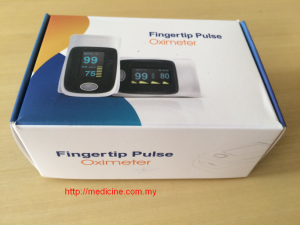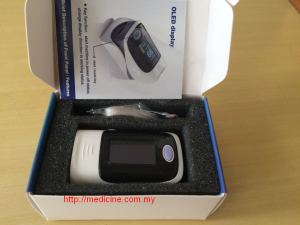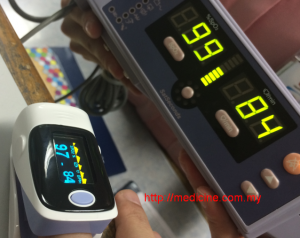Review: Portable Pulse Oximeter
Pulse oximeters are widely used by healthcare professionals today as a non-invasive way to determine the oxygen saturation ( abbreviated as SpO2, in contrast with the oxygen saturation as measured by arterial blood gas which is abbreviated as SaO2). It works on the principle of the red and infrared light absorption characteristics of oxygenated and deoxygenated hemoglobin which differ. Oxygenated hemoglobin absorbs more infrared light and allows more red light to pass through. Deoxygenated hemoglobin absorbs more red light and allows more infrared light to pass through.Pulse oximeters have a light emitter with red and infrared LEDs that shines through a reasonably translucent site with good blood flow, typically a finger or toe. Opposite the emitter is a photodetector that receives the light that passes through the measuring site. After the transmitted red (R) and infrared (IR) signals pass through the measuring site and are received at the photodetector, the R/IR ratio is calculated. The R/IR is compared to a “look-up” table (made up of empirical formulas) that convert the ratio to an SpO2 value.
This basic principle is how a Pulse Oximeter can tell you in real-time the oxygen saturation without having to resort to needles. The devices initially were quite bulky and expensive but as technology advances, they have become smaller and cheaper. Today we have tiny consumer grade portable pulse oximeters which are very affordable. They are quite accurate too, and can be handy for use by healthcare professionals as highly pocketable pulse oximeters with which a patient’s heart rate and oxygen saturation can be quickly assessed.
This post is a review of a Portable Pulse Oximeter unit provided to us by Avivac Global Venture.
It comes in a compact light weight box :
Inside, there is a leaflet with instructions, strap and the oximeter itself:
The device requires 2 AAA batteries (not provided) and looks quite well built. It has an impressive colourful OLED display unlike the plain LED digital displays from some of the other similar devices on the market. The finger fits comfortably though I find that you have to position it to get an accurate reading. What is important though is that this model has a real-time plethysmograph tracing which gives you an idea of how good the pulsatile signal is – a good signal (showing an even regular wave form) will give a more accurate reading.
I compared it with a hospital grade pulse oximeter (Nellcor) and the results seem comparable though the SpO2 consistently under-read slightly while the heart rate was practically identical:
The manufacturer claims compliance with the EMC standard IEC 60601-1-2
Conclusions
Pros
– excellent value for money
– very nice OLED colour display
– highly portable
– built in plethysmograhic display which helps tell you accuracy of the reading
Cons
– requires careful positioning of the finger in the probe
– may be slightly under reading the SpO2
For more information on Pulse Oximtery, the uses, pitfalls or sources of error, this link is pretty informative from Patient.co.uk: Pulse Oximetry
You can purchase the device online from Avivac Global Venture from their store in Lelong
Disclaimer:
This review was made independently and not a paid review. Avivac Glocal Venture has however kindly donated this unit which we will give free as a prize to one of our lucky doctors in the Dobbs Forum. For more information: see this post in the Dobbs forum



